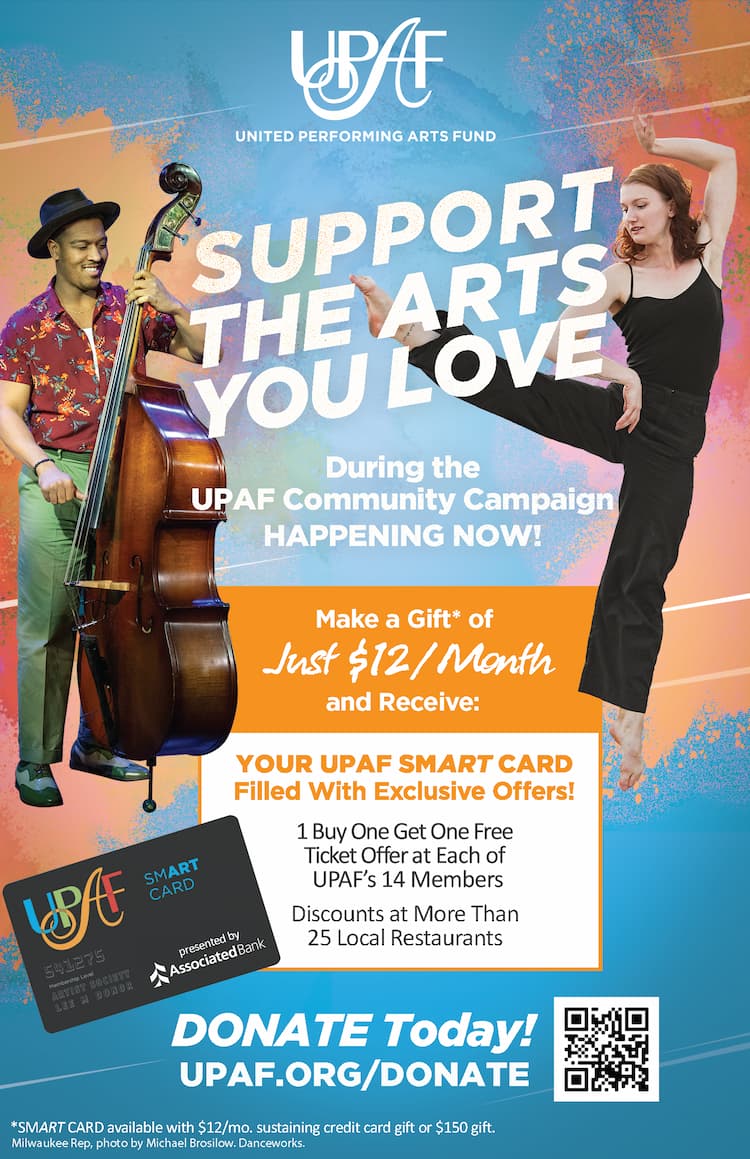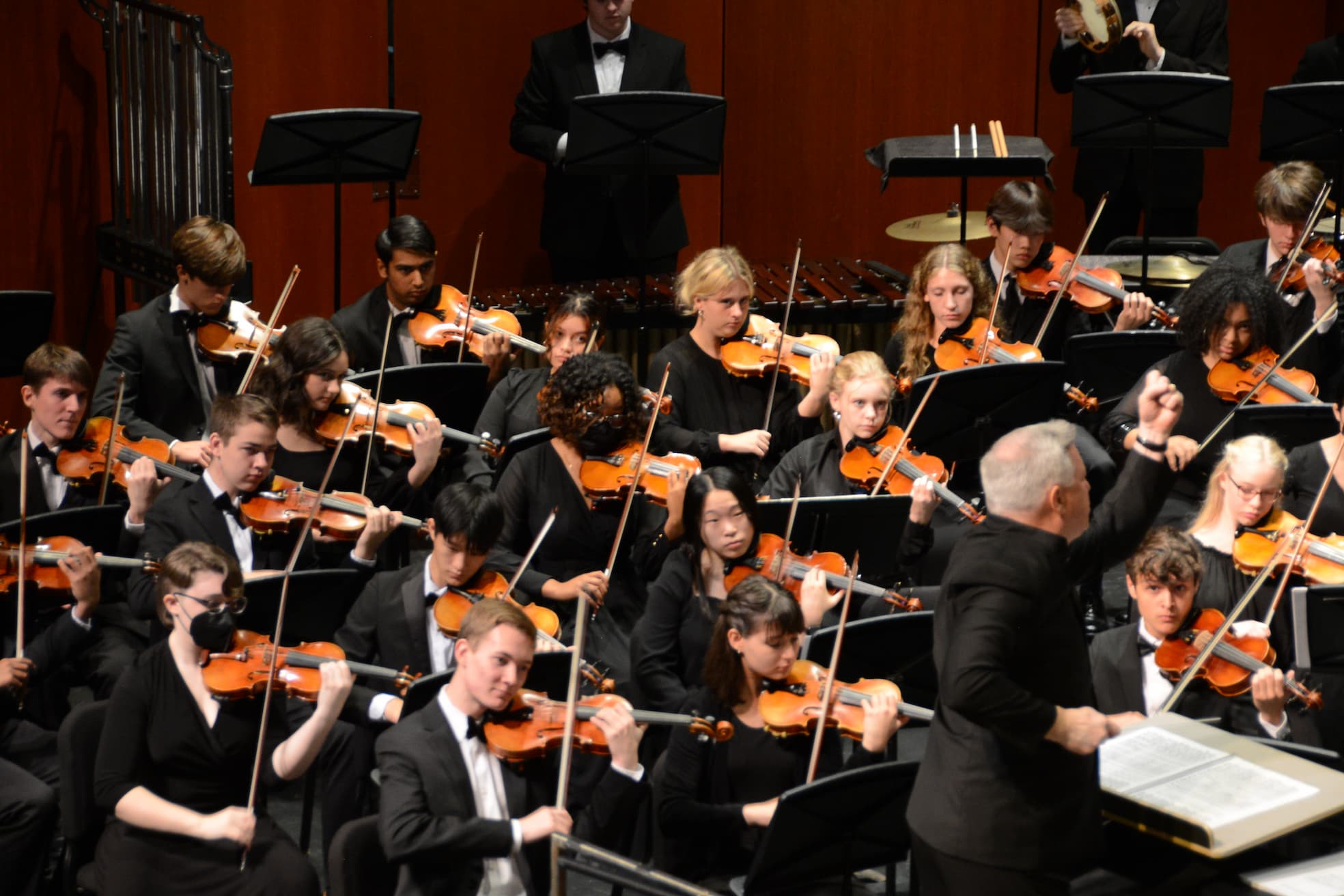
SUNDAY, FEBRUARY 5, 2023
3:00 pm
featuring the Senior Symphony
Carter Simmons, Music Director
with guest soloist Cecilia Davis, Soprano
Bradley Symphony Center
JOHN DOWNEY (1927-2004)
Ode to Freedom
Arias and Songs: Cecilia Davis, Soprano
MAURICE RAVEL (1875-1937)
“Air du feu, arrière je réchauffe les bons” from L’Enfant et les Sortilèges
HECTOR BERLIOZ (1803-1869)
Zaïde
LÉO DELIBES (1836-1891)
“Où va la jeune hindoue” ("Air des Clochettes") from Lakmé
MARGARET BONDS (1913-1972)
He’s Got the Whole World in His Hands
GEORGE GERSHWIN (1898-1937)
An American in Paris
INTERMISSION
WILLIAM GRANT STILL (1895-1978)
Symphony No. 4 ("Autochthonous")
- Longing: Moderato assai
- Sorrow: Adagio
- Humor: Animato
- Aspiration: lento con risoluzione
FIRST VIOLINS
Clark Snavely, Concertmaster
Cecilia Koth, Concertmaster
Sofia Castanho-Bollinger, Concertmaster
Arisa Okamoto, Concertmaster
Ethan Chen, Assistant Concertmaster
Jayanth Suthan
Magdalena Masur
Henry Snavely
Jasmine Storck
Max Letellier
Ethan Emanuelson
Christianna Ebel
Hans Hemann
Caleb Endres
Arisha Sobhani
Brynn Nelson
Andrea Hanna
Kayami Jackson
Grace Lee
Richard Nickel
Titus Veldhouse
SECOND VIOLINS
Madeline Bingenheimer
Zindzi Frederick
Benyamin Kim
Krish Vasudev
Valkyrie Ladd
Trinity Schrotenboer
Maia Cardew
Tamara Avdeev
Victoria Velazquez Rojas
Ben Christiaansen
Alexander Chen
Jennifer Hong
Brianna Cimoch
Emilia Sato
Yiwen Ma
Mae Jones
Maeve Kaufman
Brady Ahler
Suraksha Kodgi
Nathan Cunningham
VIOLAS
Sonya Wilhelm, Principal
Vivian Cucu, Principal
Elliot Richer, Assistant Principal
Benjamin Hruska
Katelynn Lesinski
Hayden Stringer
Brae Bigelow
Rem Leach
Shamit Surana
Christian Ostrowski
Lauryn Klinger
Sydney Badciong
CELLOS
Nolan Boerner, Principal
Noor Salameh, Principal
William Larsen
Gabrielle Peck
Luke Field
Gunnar Conine
Amber Moreno-Padilla
Nathan Hansen
Shelby Gooden
Maryveth Ochoa
Rebecca DeBoer
Lukas Vater
Ella Smullen
Carlos Recinos
Thelma-Abigail Aquino-Moreno
Emma Pingitore
BASSES
Isabella McGinley, Principal
Katya Imas, Principal
Benjamin Levin
Benjamin Crnkovich
Lauren Gooden
HARP
Maydine Bellot
FLUTES
Shreya Girish
Marisa Lehner
Zackary Muñoz
Abhinay Reddy
PICCOLOS
Marisa Lehner
Zackary Muñoz
OBOES
Lydia Morency
Abby Debbink
Elisabeth Young
ENGLISH HORNS
Abby Debbink
Elisabeth Young
CLARINETS
Lilly Beane
Rebecca Redlich
Aaron Srok
Sydney Stanford
Kaitlyn Yang
BASS CLARINET
Lilly Beane
BASSOONS
Rosalie Avery
Ben Beumler
Neil DuJardin
ALTO SAXOPHONE
Kaitlyn Yang
TENOR SAXOPHONE
Ryan Keller
BARITONE SAXOPHONE
Roberto Hill
HORNS
Shaurya Bansal
Mina Gates
Eli Hoffmann
Elijah Samuelson
Aderyn Seefeldt
TRUMPETS
Milo Ascher
Sarah Downes
Oscar Endres
Molly Gapinski
Hudson Simmons
TROMBONES
Owen Addison
Grace Fitzgerald
Grace O'Connell
Josie Sagan
TUBA
Ryan Nelson
PERCUSSION
Logan DeWaide
Daniel Grady
Kishore Mohanram
Isaac Visser
PIANO
Caleb Endres
CELESTE
Daniel Grady
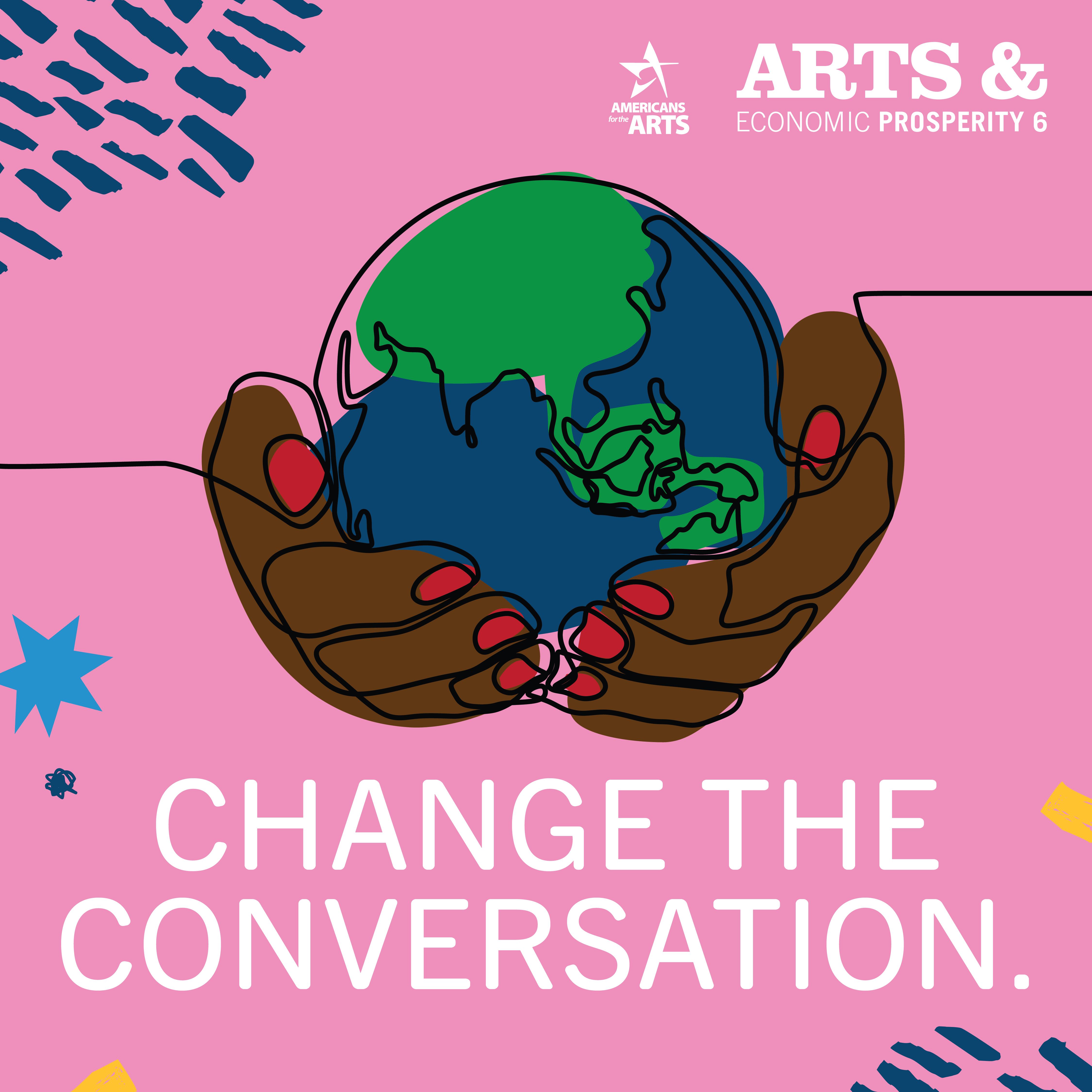 Please help MYSO make the case for government and corporate support of the arts and culture sector in Milwaukee by filling out this survey. MYSO is partnering with Imagine MKE and Americans for the Arts to measure the economic and social impact of arts and culture in Milwaukee. It will only take 2-3 minutes to complete. Your answers are completely anonymous.
Please help MYSO make the case for government and corporate support of the arts and culture sector in Milwaukee by filling out this survey. MYSO is partnering with Imagine MKE and Americans for the Arts to measure the economic and social impact of arts and culture in Milwaukee. It will only take 2-3 minutes to complete. Your answers are completely anonymous.
Click here for the survey.
John Downey 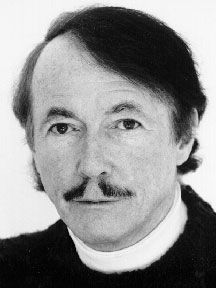
b. October 5, 1927: Chicago | d. December 18, 2004: Milwaukee
Ode to Freedom
Among the most distinguished members of Milwaukee’s musical community, John Downey was named “Chevalier de l’Ordre des Arts et des Lettres” by the French government in 1980 and, in 1990, was awarded the Walter Hinrichsen Prize from the American Academy and Institute of Arts and Letters.
.jpg) After gaining degrees from DePaul University and the Chicago Musical College, Downey went to Paris on a Fulbright Grant, where he was awarded a Prix de Composition from the Paris Conservatoire National de Musique and a Ph.D. (his dissertation is a significant study of Bartok’s music) from the Sorbonne (University of Paris). He has studied with Darius Milhaud, Nadia Boulanger, Vittorio Rieti, and Rudolph Ganz, and has been associated with such figures as Milton Babbitt, Oliver Messiaen, Roger Sessions, and Alexander Tcherepnin.
After gaining degrees from DePaul University and the Chicago Musical College, Downey went to Paris on a Fulbright Grant, where he was awarded a Prix de Composition from the Paris Conservatoire National de Musique and a Ph.D. (his dissertation is a significant study of Bartok’s music) from the Sorbonne (University of Paris). He has studied with Darius Milhaud, Nadia Boulanger, Vittorio Rieti, and Rudolph Ganz, and has been associated with such figures as Milton Babbitt, Oliver Messiaen, Roger Sessions, and Alexander Tcherepnin.
Traveling throughout America, England, Brazil, Australia, France, Mexico, and Ukraine (USSR) to attend performances and festivals of his music, Downey balanced an active creative life with posts as Distinguished Professor of Fine Arts-Music at UW-Milwaukee and at MYSO as Director of Music Theory and Composition for more than 40 years.
.jpg)
Mr. Simmons and Dr. Downey, c. 2002
Dr. Downey was a very important and beloved member of the MYSO family until his passing in 2004. He played a critically important role in the lives of thousands of students, several of whom have become noted composers, and was central to our organization and mission for many years. His students were an essential and joyous part of his storied career.
Originally written in 1990 as Fanfare for Freedom, this seven-minute work was rescored for full orchestra during the spring of 1992 and first performed by the Milwaukee Symphony Orchestra in the following year. Of it, Downey wrote:
In the summer of 1989, I was amazed by the crumbling of the Iron Curtain without a shot being fired. The Soviet recipe for life, communism, began to self-destruct of its own volition--from within--without a war, and minus any particular push from the outside world. This miracle of history left me in awe, in a state of delirium, and it still leaves me bewildered and amazed today.
At the same time, the students in China were attempting to steer their country towards democracy and freedom. Witnessing the tragic collapse of their student-led revolt via the wizardry of television, I, too, was crushed by its failure. This hit me all the more poignantly as I sat amazed before my TV screen observing that they had constructed a replica of our beloved Statue of Liberty as a kind of tribute to our own symbol of democracy and freedom. It was astonishing to realize that these young people so far away in their relatively isolated society even knew about our symbol of liberty. We as Americans know the tremendous problems that we face, continuously here at home--attempting to preserve and to strengthen our own precious freedom, endeavoring to keep democracy functioning, while trying to satisfy with justice the myriad hopes and ideals of all of our constituencies--it nonetheless helped me appreciate all the more profoundly those cherished principles that we already possess having seen these young people sacrifice their own lives for ideals that we all too often take for granted.
This work is directed towards people who are young of heart. It is aimed at those who share the inspiring optimism that freedom and its whole concept potentially awakens. Those who already enjoy freedom and cherish liberty know that it entails responsibilities. Freedom’s rewards are precious as well as priceless. For those just beginning to taste the special pleasures of freedom, hopefully this brief piece can help codify musically some of the intangible fantastic-ness that freedom generates.
Ode to Freedom exists in a version for symphonic wind ensemble, Fanfare for Freedom. It had its world premiere in Aberdeen, Scotland on August 8, 1991, by the Milwaukee Youth Symphony Orchestra (which commissioned the work) conducted by Margery Deutsch. It is dedicated to the memory of Francesca “Peter” Davidson, a long-time supporter and board member of MYSO.
This seven-minute composition is based upon a theme stated immediately after a brief introduction. This main theme is launched by the strings. Several contrasting sections ensue. The opening theme is developed rather extensively. After a rather intense climax, the mood of the composition becomes happier--more optimistic in character. It ends on an enthusiastic note as the joy of freedom permeates all.
Maurice Ravel
b. March 7, 1875: Ciboure (in the Basque region of France) | d. December 27, 1937: Paris
"Fire Aria," from L’Enfant et les Sortilèges
Characterized by Ravel as a “lyric fantasy in two parts,” L’Enfant et les Sortilèges is literally translated as “The Child and the Sorceries,” or more simply as “The Bewitched Child.” Based on a libretto by the French author and actress Colette (1873-1954), this mini-opera was unveiled in Monte Carlo on March 29, 1925.
Essentially, this is a scene of a six-year-old boy who rebels against having to do homework, tears up his room, interacts with variously disturbed elements in it, then calms down upon his mother’s return. Notable among the disturbed elements is the fire in the fireplace. With virtuosic lines of a coloratura soprano, the fire warns: “I fill the good with warmth. Take care, I burn the wicked,” then diminishes to a cinder.
Get away!
I warm up the good kids, I warm up the good kids, but,
I burn up brats like you!
You little twit, you’ve really done it,
You have spat in the face of all good gracious fate,
That protects you from all that I can do!
Boy, you’re playing with FIRE!
You did brandish the poking rod,
Kicked over the ash pot,
And scattered the matches all over the place! Boy!
Boy, beware of Fire!
You’ll be a sizzling snowflake on my red-hot tongue!…
Boy! I warm up the good kids!
Boy! I burn up all the brats!
Boy! Boy! Ah! I’ll burn YOU!
Hector Berlioz
b. December 11, 1803; Cote St. André | d. March 8, 1869; Paris
"Zaïde," Bolero for Voice and Orchestra, H. 107 (Opus 19, No.1)
The mid-1840s was a difficult period for Berlioz, for despite completing The Damnation of Faust and his still-remarkable treatise on orchestration, demand for his music was slight and his marriage to actress Harriet Smithson disintegrated. Unable to support himself exclusively as a composer, Berlioz supplemented his income by working as a music critic and organizing concert tours through a number of European capitals.
It was for one of these tours that Berlioz penned the present virtuoso turn for soprano and orchestra in 1845-46. Setting a poetic trifle recalling a Spanish homeland by Roger de Beauvoir (1809-1866), Berlioz imaginatively uses castanets to flavor his soundscape. First sung in Vienna on November 29, 1845, by soprano Henriette Treffz, this bolero retains its charming appeal to singers and audiences.
My city, my lovely city,
Is Granada with its cool garden.
Aladdin's palace is there,
The equal of Cordova and Seville.
All her balconies are open,
All her fountains' basins clear;
All the sultans' court
Is held beneath the green myrtles.
Thus near to Zoraïde,
Letting her voice run free,
Sang the young Zaïde,
Her feet in golden sandals.
The queen said to her,
“My girl, where do you come from?”
“I know not.”
“Have you then no family?”
“Your love is all my happiness.”
“Oh my queen, for father I have
This sun full of sweetness;
The sierra is my mother,
And my sisters are the stars.”
But then upon the hill
Zaïde wept to the night:
“Ah! I am just an orphan,
Who will care for me?”
A knight saw the pretty girl,
Took her upon his golden saddle.
Granada, alas, is far from her,
But Zaïde still dreams of it.
Leo Delibes
b. February 21, 1836; St. Germain-du-Val | d. January 16, 1891; Paris
"Lakmé's Bell Song," from Lakmé
Primarily celebrated as a pioneer of symphonic ballet music, the French composer Delibes also scored a tremendous success with his opera of 1883: Lakmé. Set in India, this exotic tale tells of Lakmé, the daughter of a fanatical Brahmin priest, and her ill-fated love for an English officer.
In Act II, Lakmé seeks her Englishman in a market by singing the opera’s best-known excerpt, the Bell Song (Où va la jeune Hindoue?), evoking the sound of small bells with dazzling coloratura.
Where goes the young Indian girl,
daughter of the pariahs,
When the moon it plays,
On the tall mimosa trees?
She runs over the moss
And she doesn't remember
That everywhere is shunned
The child of the pariahs;
Past the pink laurels,
Dreaming of sweet things, Ah!
She passes without noise
And smiles(laughs) at the night.
Over there in the forest more dark,
Who is the traveller, lost?
All around him
The eyes shine in the shadows,
He wanders on bewildered and lost!
The wild beasts roar with pleasure,
They go to pounce(jump) on their prey,
The young girl runs up
And braves their fury:
She has in her hand the wand
Where tinkle the bells of the enchanter!
The stranger looks at her,
She stands dazzled.
He is more beautiful than all the Rahjas!
He will blush, if he realizes(knows) that he owes
His life to the daughter of pariahs.
But he, lulling her to sleep in a dream,
He transports her to heaven,
And telling her: 'your place is there!'
It was Vishnu, son of Brahma!
Since that day in the depths of the forest,
The traveller may sometimes hear
The faint sound of the wand
Where tinkle the bells of the enchanter!
Traditional Black American Spiritual, arr. by MARGARET BONDS
"He’s Got the Whole World in His Hands"
Traced back until at least 1927, this beloved Black American spiritual had a rise in popularity in 1958. It had another boost in performance with Margaret Bonds’ arrangement for Leontyne Price in 1963.
A native of Chicago, Bonds (1913-1972), gained a master’s degree in music from Northwestern University in 1934, premiered as soloist in Florence Price’s Piano Concerto in D minor in that same year, collaborated with Langston Hughes, and was active in New York City and later in Los Angeles.
He's got the whole world in His hand.
He's got the wood and the waters in His hand,
He's got the sun and the moon right in His hand,
He's got the whole world in His hand.
He's got the birds and the bees right in His hand,
He's got the beasts of the field right in His hand,
He’s got the whole world in His hand.
He's got you and me right in His hand,
He's got everybody in His hand,
He's got the whole world in His hand.
George Gershwin
b. September 26, 1898; Brooklyn | d. July 11, 1937; Hollywood
.jpg) An American in Paris
An American in Paris
Commissioned to write a work for the New York Symphony Society, Gershwin responded with a programmatic tone poem that reflected his experiences in Paris during the spring of 1928. Premiered by Walter Damrosch and the newly formed New York Philharmonic-Symphony Society on December 13, 1928, An American in Paris is regarded as the composer’s most successful purely symphonic effort.
Calling his work a “rhapsodic ballet,” Gershwin explained: “My purpose here is to portray the impression of an American visitor in Paris, as he strolls about the city, and listens to various street noises and absorbs the French atmosphere...The opening gay section is followed by a rich blues with a strong rhythmic undercurrent. Our American friend perhaps after strolling into a cafe and having a couple of drinks, has succumbed to a spasm of homesickness. The harmony here is both more intense and simple than in the preceding pages. This blues rises to a climax followed by a coda in which the spirit of the music returns to the vivacity and bubbling exuberance of the opening part with its impressions of Paris. Apparently the homesick American, having left the cafe and reached the open air has disowned his spell of the blues and once again is an alert spectator of Parisian life. At the conclusion, the street noises and French atmosphere are triumphant.”
Mario Braggiotti, a pianist involved with a London production of the Gershwins’ Funny Face, told an amusing anecdote about his encounter with Gershwin during the composition of An American in Paris. He said:
When I was about seventeen, I went from Boston, Massachusetts, to Paris to study music at the Conservatory of Music, and there I met a young fellow student named Jacques Fray. We formed a piano-duo team and we were perhaps the first to play both classical and popular in the same program.
When we were in Paris, we heard about the young American composer George Gershwin coming to the French capital to get the atmosphere and write An American in Paris. Gershwin was a hero of Jacques’ and mine, and we wanted to meet him.
So, we went to his hotel one morning and boldly knocked on his door. He opened it. He was in his dressing gown, and his hair was all kind of up in what I call the composer’s style. I said, “Mr. Gershwin, my name is Mario and this is Jacques. We are music students and we just would like to meet you.” ‘Well, boys, that’s fine,’ he said, ‘come right in.’ He was very welcoming. There was a Steinway piano right in the middle of his room and I noticed on the piano a collection of taxi horns--from those old-fashioned taxis they used in the Bataille della Marne. There were about twenty of them lying there. I hadn’t been to New York in a few years, so I thought this was some new American eccentricity or fad. I didn’t know what to make of it.
‘Oh,’ he said, ‘you’re looking at these horns. Well, in the opening section of An American in Paris I would like to get the traffic sound of the Place de la Concorde during the rush hour, and I’d like to see if it works. I’ve written the first two pages of the opening. Jacques, you take this horn--this is in A-flat. Mario, you take this—it’s in F-sharp. Now, I’ll sit down and play, and when I go this way with my head, you go quack, quack, quack like that in that rhythm.’
So, we took the horns, and there we stood, nervous and excited, and for the first time we heard the opening bars of An American in Paris--a lanky American walking down the Champs-Elysees. He captured the atmosphere, the feeling, the movement, the rhythm so perfectly.
Well, when we came to the horn parts, he nodded and we came in. That was the first and last time that I ever played French taxi horns accompanied by such an illustrious composer.”
In 1951, An American in Paris formed the basis for a movie of the same name starring Leslie Caron and Gene Kelly. The fact that the entire tone poem was used in a twenty-minute interpretive ballet helped to secure the Academy Award for the film.
William Grant Still
b. May 11, 1895; Woodville, Mississippi | December 3, 1978; Los Angeles, California
Symphony No. 4 (“Autochthonous”)
Among the first Black Americans to gain celebrity as a classical composer, William Grant Still found inspiration in a wide variety of musics. Born on the brink of the 20th-century, Still was always drawn to music, but began pursuit of a medical degree at Wilberforce University. He was ultimately able to work at the Oberlin Conservatory and later studied composition privately with Edgard Varése and George Whitfield Chadwick.
In 1916, Still worked at W.C. Handy’s music publishing company in Memphis; with the outbreak of WWI, Still joined the Navy and soon was playing violin in the officers’ mess. After the war, Still went to New York City, where he again worked with Handy and played a variety of gigs. In the 1920s he began devoting more to composing, leading to his first big success, the Afro-American Symphony No. 1 of 1931. Ultimately, amid Still’s one-hundred-or-so works, are five symphonies and nine operas. Still was ultimately honored with a host of fellowships, honorary doctorates and the well-earned sobriquet “Dean of Afro-American Composers.”
Written in an intense August in 1947, Still’s Fourth Symphony bears the subtitle “Autochthonous,” (aw-tok-thuh-nuh s), suggesting that, like the American spirit, it springs directly from the soil. Still once wrote that this symphony “speaks of the fusion of musical cultures in North America.” Dr. Still’s daughter, Judith, explains further that this symphony “is praise for people who came ‘from the soil,’ abused and enslaved, and recognizes the power of those who had been so mightily put upon when they triumphed with honor over a difficult past. Out of the soil of oppression and forced degradation they rose up and acquitted themselves, bringing along their unique songs, humor, and distinctive, vibrant culture.”
The symphony’s four movements were described by Dr. Still: “1. Moderately: The spirit of optimism and energy; the American ability to ‘get things done’ 2. Slowly: pensive, then later in the second subject, animated in a folksy way 3. With a graceful lilt: humorous and unmistakably typical of our country and its rhythms 4. Slowly and reverently: the warmth and the spiritual side of the American people, their love of mankind. It may also be said that the music speaks of the fusion of musical cultures in North America.”
The Oklahoma City Symphony Orchestra, under Victor Alessandro, premiered this work on March 18, 1951.
Thank you to those who regularly work with our Senior Symphony musicians!
- Paul Hauer, String Advisor
- Lisa Werner, Orchestra Manager
- Paul Sekulski, Music Librarian
In addition, we are grateful to these teaching artists who coached the orchestra:
- Frank Almond, Johnston Family Artist-in-Residence
- Christine Annin
- John Babbitt
- Ben Haimann
- Rudi Heinrich
- Amanda Koch
- Ann Lobotzke
- Kevin Pearl
- Don Sipe
- Catherine Van Handel
- Tobie Wilkinson
- Adrien Zitoun
Donations to MYSO are the crucial funding source that allow us to nurture, challenge, and inspire young minds, profoundly changing lives and our community for the better. We are tremendously grateful for these important gifts.
This list recognizes gifts of $250 or more that were received from July 1, 2022, through January 12, 2023. We encourage you to call Emma Kunz, Philanthropy Operations Manager, at 414-267-2943, with questions or corrections—or to learn how to make a much-appreciated gift to MYSO.
Energico ($350,000 - $500,000)
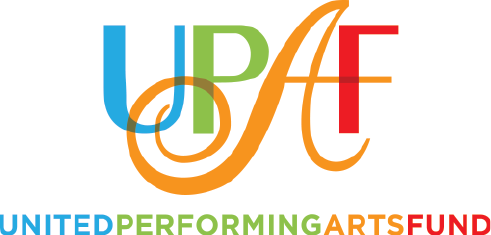 United Performing Arts Fund
United Performing Arts Fund
Appassionato ($100,000 - $349,999)
The Burke Foundation
Maestoso ($20,000 - $99,999)
Bader Philanthropies, Inc.
The Gannett Foundation
Harri Hoffmann Family Foundation
MPS Recreation Partnership for the Arts and Humanities
The Richard & Ethel Herzfeld Foundation
Con Fuoco ($10,000 - $19,999)
Anonymous (2)
Laura & Mike Arnow
Francie Luke Silverman Foundation
The Frank and Lucille Puncer Foundation
Tim & Sue Frautschi
Greater Milwaukee Foundation
Luedke-Smith Fund
Adelaide F. Banaszynski Memorial Fund
Johnson Controls
Angela Johnston
Krause Family Foundation
Elaine & Gerry Mainman
Melitta S. & Joan M. Pick Charitable Trust
Molitor Foundation
Peck Foundation, Milwaukee LTD
We Energies Foundation
William N. and Janice V. Godfrey Family Foundation
Wisconsin Arts Board with funds from the National Endowment for the Arts
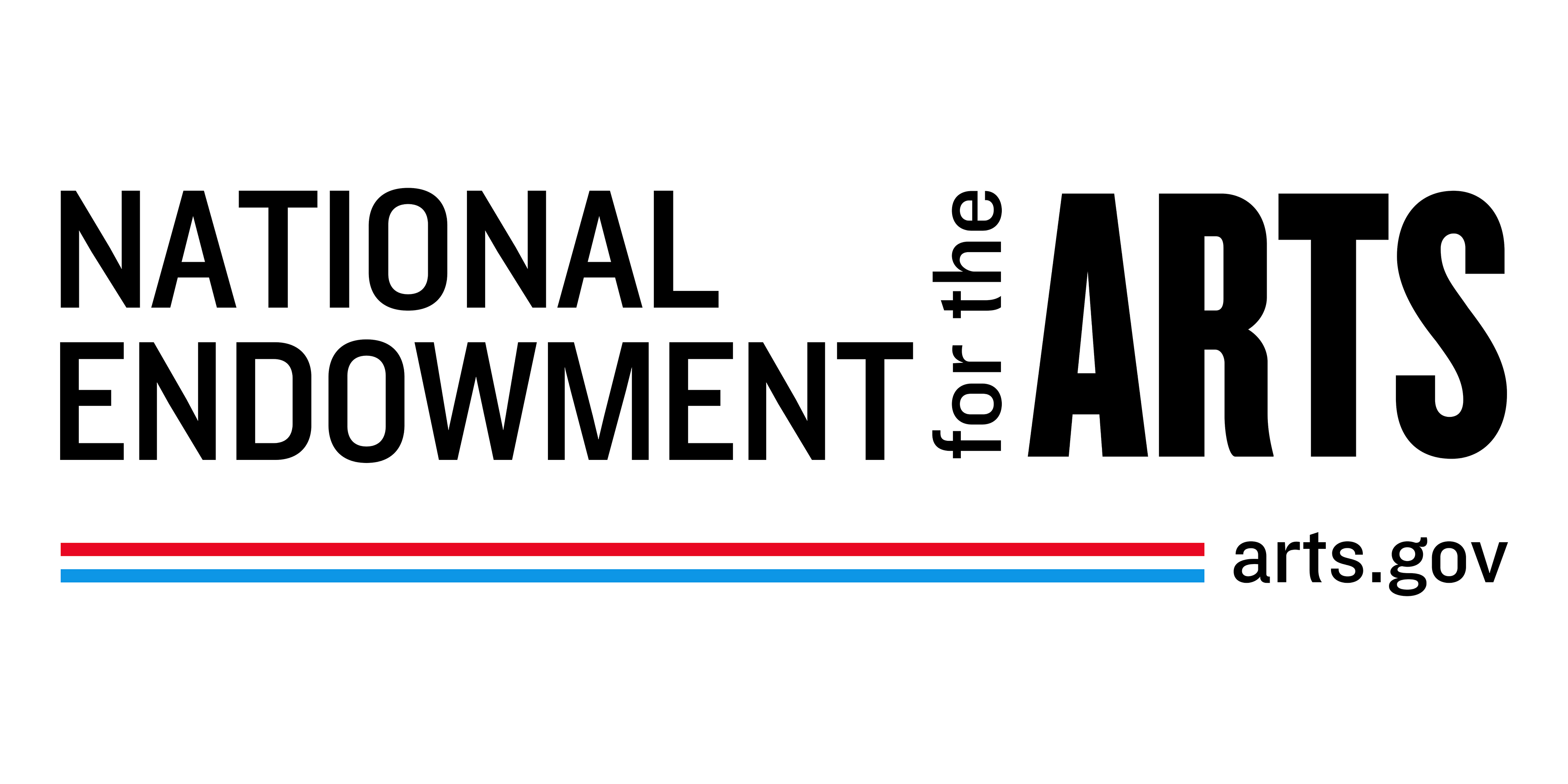
Vivace ($5,000 to $9,999)
Anonymous
529Innovations
Anon Charitable Trust
Ken & Kris Best
Brico Fund
Bobbi & Jim Caraway
Jeff Edelstein, MD
Linda Edelstein
George & Jill Fahr
Michael & Jennifer Hansen
Jerome and Dorothy Holz Family Foundation
Madeleine & David Lubar
Maihaugen Foundation
Manpower Group
Milwaukee Arts Board & Wisconsin Arts Board, with funds from the State of Wisconsin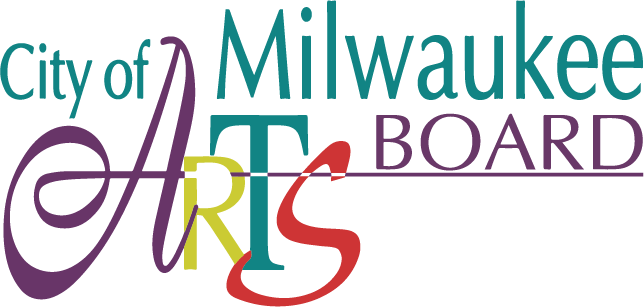

Milwaukee County Cultural Artistic & Musical Programming Advisory Council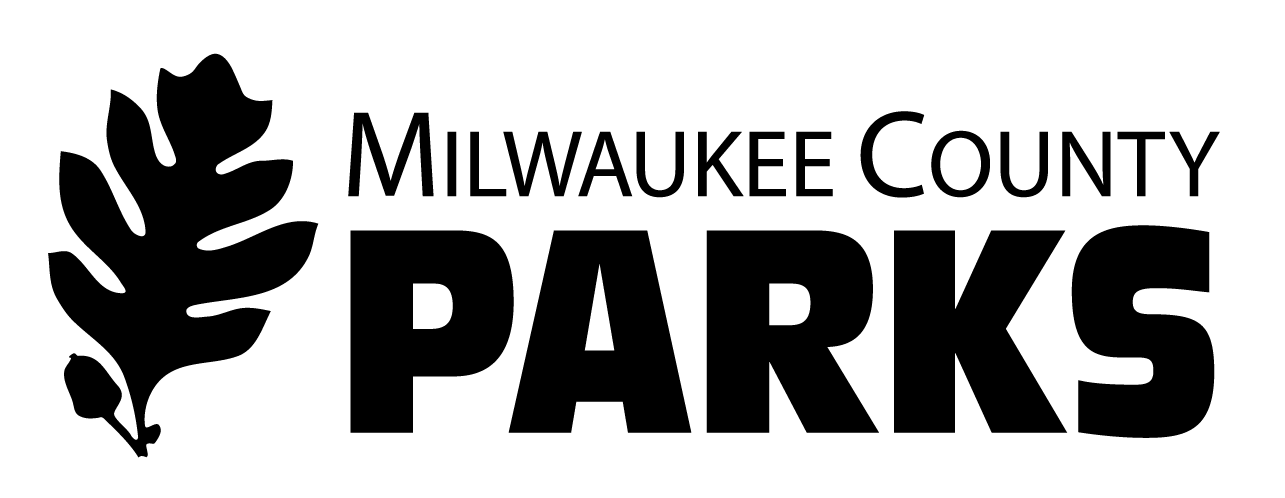
PNC Foundation
Lacey Sadoff
Michael Schmitz
Zilber Family Foundation
Animato ($2,500 - $4,999)
Anonymous
Brian & Laurel Bear
John & Marilyn Breidster
Richard Buchband & Betsy Rosenblum
Croen Foundation, Inc.
Andrew DeBoer
Thomas & Deborah Degnan
Dal & Jackie Drummer
Elmbrook Rotary Foundation
Ernest and Sally Micek Family Foundation
Steve & Nancy Fisher
Greater Milwaukee Foundation - Judith A. Keyes Family Fund
Margarete & David R. Harvey
Hunzinger Construction Company
Jane Bradley Pettit Foundation
Laskin Family Foundation
Northwestern Mutual Foundation
Craig & Mary Robyn Peotter
Faye Scheil
Settlers Club of Wisconsin
Stafford Rosenbaum LLP
Don & Kate Wilson
Cantabile ($1,000 - $2,499)
Anonymous (2)
Abbot Charitable Foundation
Affinity Accounting
Arzbaecher Family Foundation
Bruno Barnagaud
Jeff & Kate Behring
Doug & Molly Bell
Sue Bellehumeur
Peter & Sally Blommer
Mark Blutstein
Erin Casper Borissov
Cedar Street Charitable Foundation
Diane & Craigh Cepukenas
Susan Cerletty
Joe and Lisamarie Collins
Sue & Curt Culver
Davidson and Harley Fund, Inc.
George & Sandy Dionisopoulos
John & Tamara Dunn
Jim & Andrea Emling
Suja Finnerty
Penny Forrest
Barbara D. Froemming
Lisa Froemming
Greater Milwaukee Foundation - Milwaukee Music Scholarship Fund
Sigrid Gullickson Jablonka & Roy H. Jablonka
Gustav and Gladys Kindt Foundation
Stephen Hargarten, MD
Heil Family Foundation
John & Marci Hunzinger
Independence First
Daniel Jablonski
Stanley Jaspan
Mike & Mary Jordan
Tom Kissinger
Greg & Linda Kliebhan
Connie Kling
David Kuchta-Drane
Mark & Karin Kultgen, MD
Jun Li
Ann MacIver
Jennifer Mattes
Ascaris Mayo
Mac & Sandy McSweeney
Mike Miksich
Erik & Carol Moeser
Peter & Deborah Musante
Jeanna Nelson
NOG, Inc.
Lois and Richard Pauls
Pegasus Partners
Anthony & Beverly Petullo
Julie Ragland & Russell Grabczyk
Steve & Fran Richman
Riverstone Wealth Management, LLC
Jay & Tracy Rothman
Steve Russ
Carter & Pamela Simmons
Dawn Simmons
Mark & Julie Steinhafel
Steinway Piano Gallery
Jason & Monica Stevenson
Kent & Marna Tess-Mattner
Textron
Adam J. Toth
Gregg & Tami Ulatowski, MD
Richard Walters
ZS Architectural Engineering
Con Espressione ($500 - $999)
Amalga Composites, Inc.
Danielle Baerwald
Micaela Bomhack
Briohn Building Corporation
BVK
Camille A. Lonstorf Trust
Bruce & Marsha Camitta
Richard & Sharon Canter
Mark & Linda Carlson
Cedar Crest Specialties Inc.
Gil & Sinikka Church
Mary & James Connelly
Cathy & Mario Costantini
Angie & Mark Cotteleer
Tom & Lynda Curl
James Dorman
Curt & Carrie Downes
Peter Eash-Scott
Jack Edelstein & Sharon Lewin
Erik Eisenmann
Suzy Ettinger
Brian & Pat Falk
Christina & Karl Fiasca
Matt & Theresa Field
Dean Fitzgerald
Michael Gauger
Greater Milwaukee Foundation - MacDowell Club of Milwaukee Fund
Dick Hack & Suzan Ben-Poorat
Margaret Hader
Torrin Hallett
Angie Jellish
Renee Johnson
Charles & Kristen Kidd
Ryan Klinger
Joan Kojis, PhD
Karen Krammer
Kathy & Scott Kroeger
Emma & Alexander R. Kunz
Eric Larson & Susan Lewis
Debora M. Laws
Michael & Deb Linley
Fran Luebke
Nathaniel K. Lynn
Raul & Pamela Mateo
Jim McKeown
Bob Monnat
Nicole Nelson
Dave & Sue Ogden
Ogden & Company, Inc.
David & Mindy Palay
Theodore & Kelsey Perlick Molinari
Michael R. & Joan G. Potter
Shana Pradeep
Thomas Rose
Dr. Thomas J. Russell
Tom & Judy Saeger
Carol & Kevin Schuele
Chuck & Kristin Severson
Joel & Andrea Snavely
Soik Family
L. William Staudenmaier
Fred Tabak
TMB Development
Antoinette Vaughn
Margie Vehrenkamp
Caleb Veldhouse
Terry & Ladene Veldhouse
Todd & Stacy Velie
Rhona Vogel
Greg Wernert
Michael & Cathy White
White House of Music
Jim & Susee Wiechmann
Don & Marian Yoder
Mark & Evonne Zalewski
Shuang Zhao
Ed & Doreen Zieger
Rebecca Ziety
Grazioso ($250 - $499)
Anonymous (3)
Chris Addison
Marna Addison
Mary Albrecht
Bruce & Laurie Arnold
Tino & Penny Arvanetes
Dave & Linda Atkinson
Paul Baerwald
Lucy Bahn
Michael & Ellen Bartel
Thomas Benner
Julie & Mark Berquist
Bert & Marlene Bilsky
Judith Bingenheimer
Jonathan Bloom
Kathryn C. Bloomberg
Joseph & Karen Branch
Shari & Martin Brand
Steve & Karen Braun
Jill Broekhuizen
Leroy Brown
Martha Brown & Tony Lam
Robo & Kathy Brumder
James Burmeister
Burton & Audrey Strnad Donor Advised Fund of the Jewish Community Foundation
Martin & Kathleen Butorac
Kathryn Carlson
Liyu Chen
David & Sarah Clark
Jim & Martha Clark
Michael Cleary
Pam Conine
Brooke & John Creagh
Eric & Nicole Crnkovich
Joel Davel
Anne de Vroome & Garrett Kamerling
Dirk & Terry Debbink
Lois Ellen Debbink
Damon Dewaide
Walter Dryburgh III
Ted & Beth Durant
Thomas & Linda Dvorak
Penny S. Egan
Eileen & Howard Dubner Donor Advised Fund of the Jewish Community Foundation
Rachel Enright
David Ewald
Joshua & Sara Field
Fish Window Cleaning
Marcia Forman
Pamela Frautschi
Heidi Furlong
Katherine Gabor
Robert Gabriel
Jodi Gibson
Charles & Susan Gnewuch
Goldstein Law Group, S.C.
Barbara Groth
Steve & Mardee Gruen
Nicholas & Danita Hahn
Philip Halley
Edward Hammond
Steve & Stephanie Hancock
Stanley & Julie Hanna
Phil & Mary June Hanrahan
Ijoister Harris
Melva Henderson
Elizabeth Hill-Karbowski & Jeff Karbowski
Jason Hille
Troy Hilliard
Jamey Aebersold Jazz
Thomas & Patricia Jester
Laura Johnson
Jayne Jordan
Margaret Kaine
Jim & Robin Kasch
Steve & Ellen Kellogg
Scott & Ellen Knowles
W. David & Dedi Knox II
Michael Koebel
Sophie Kojis
Tara & Darren Kozik
Tony & Sue Krausen
Michael & Patricia Kremin
Lois Krewinghaus
Katarzyna Krynicka
Valerie Laabs-Siemon
Donald Lawson
Eileen & Paul LeFort
Bruce Martin
Sandy Metzger
Jay Miller & Donna Faw
Daniel Miske
Lindsey Moloney
Scott Mueller
'nalytix LLC
Kim Nghiem
Amanda O'Day
Peter Ogden & Terri Mahoney-Ogden
Ron Oshima & Kari Oshima Gunderson
Joanne Peck
Mark & Julie Petri
Pamela Pletcher
Bunny Raasch-Hooten
Clare Reardon
Ben & Kristin Rehberg
Steven & Rona Rindt
Chuck & Pat Roy
Patricia Ryan & Randall Daut
Andrew & Natalie Sajdak
Howard & Robin Schlei
Seer Interactive
Allen & Diane Sengpiel
Randall & Kay Shrader
Russ & Barb Simpson
Ruthanne Spaay
Barbara Stanford
Calla Stanford
Jeffrey & Marjorie Stearns
Steven & Denise Trinkl
Madelaine Tully
Todd Turk
Kimberly Uding
Mike Utschig
Miriam van de Sype
Yesenia Villanueva
Fred & Anne Vogel
Jan Wade
Alfred Weil
Katy Weisenburger
Chuck Wikenhauser
Colleen Wilder
Arthur Wolf
Hope Wolf
Irene Yakubovich
Clara Yu
Michael and Eileen Zei
